History of the Flood Warning System#
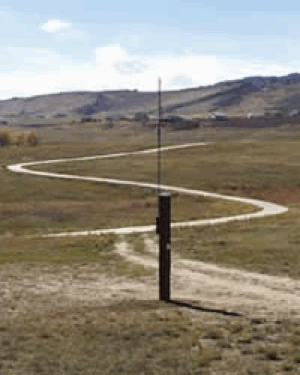
Rainfall gauges were installed as part of the flood warning system after the 1997 flood.
After the devastating 1997 flood, the City applied for money from the Federal Emergency Management Agency's (FEMA) Hazard Mitigation Grant Program. Through a grant award, the City developed and installed the first gage locations of a comprehensive Flood Warning System in June 1999. Additional grant award funding in 2000 and 2016 was committed to system expansion, but Fort Collins Utilities stormwater funding has been the primary funding source for growth of the system to better serve our mission to improve public safety through early warning/flood detection. The system currently comprises 81 gage locations both within the City, and in County areas that present a downstream risk to the city.
Growth of the system’s gage network has expanded its use through partnerships with other City departments who use the data for various purposes including:
- monitoring water quality impacts along the Poudre River affected by runoff from wildfire burn scar areas to better protect the City’s water treatment plant
- knowing how much to irrigate parks and golf courses based on recent rainfall
- odor monitoring at wastewater treatment plants
- measuring and documenting a variety of Poudre River water rights held by the City
- improving radar calibration efforts by CSU researchers
- assisting with improving stormwater drainage design
The City’s Flood Warning has documented several flood events over the past 20 years. Here are images of the rainfall and streamflow data from several notable events:
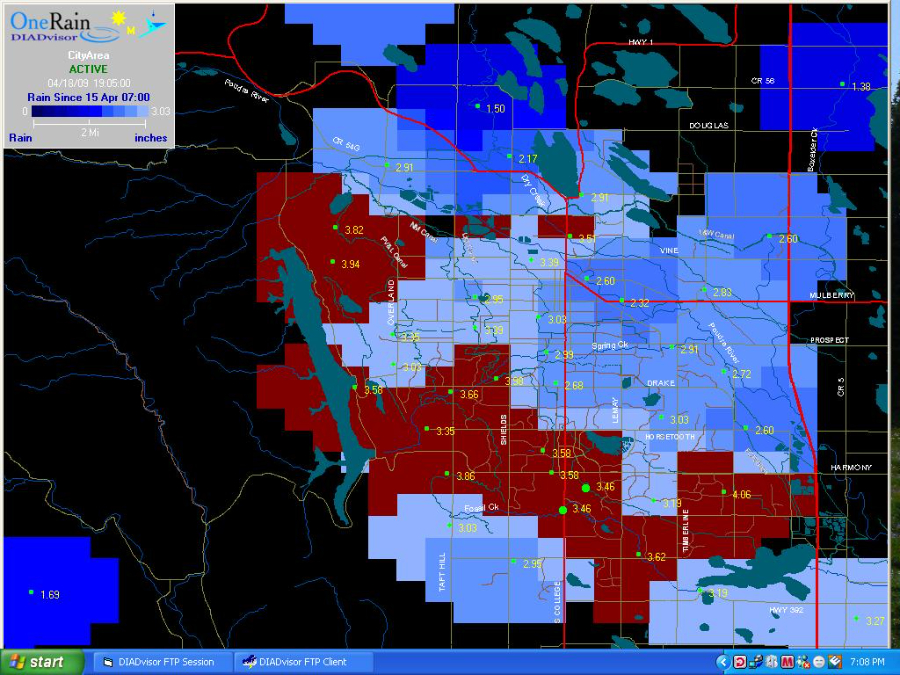
April 17-18, 2009
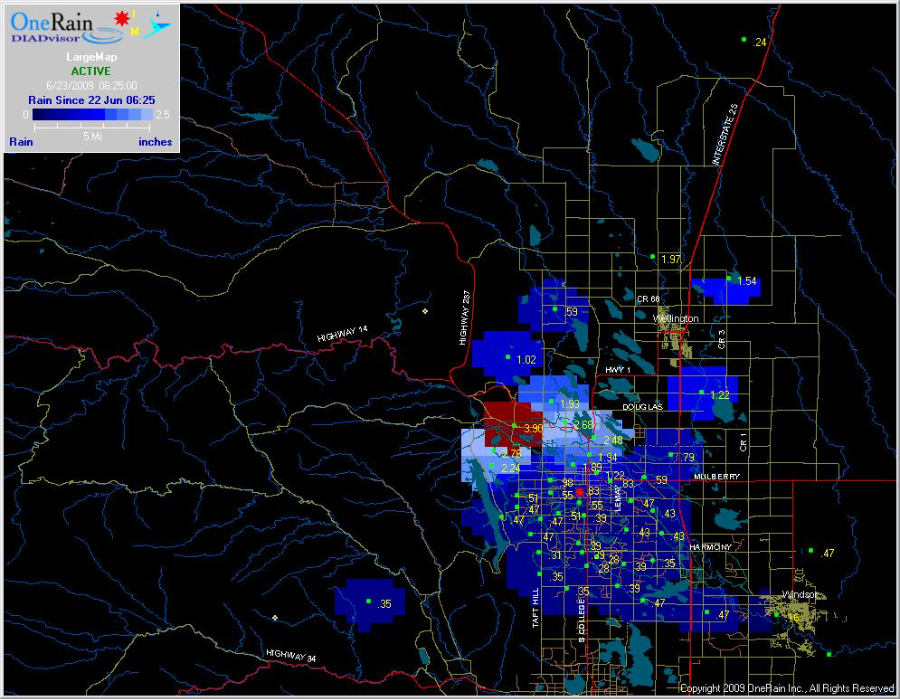
June 22, 2009
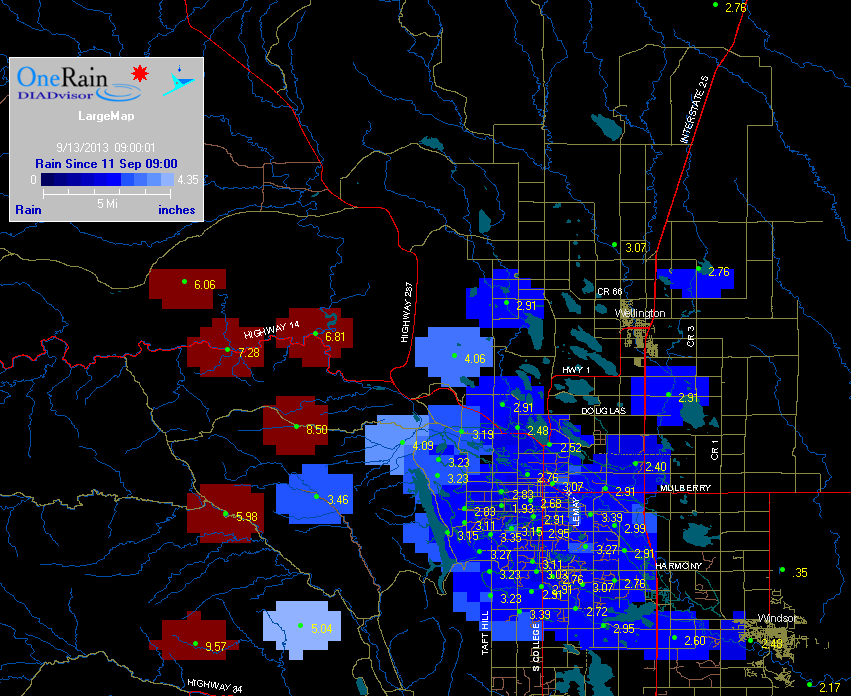
Sept. 11-13, 2013
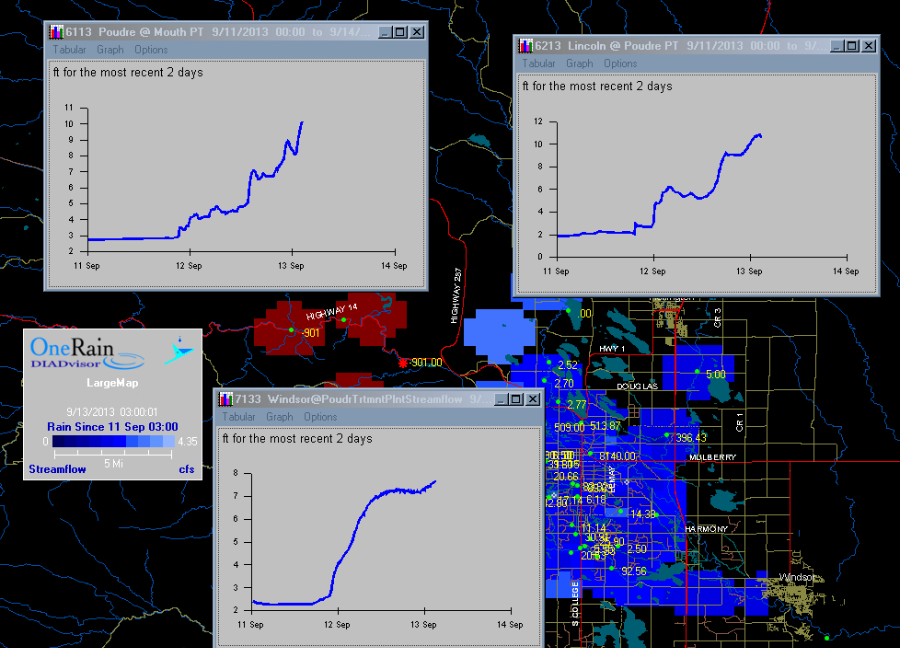
Sept. 11-13, 2013
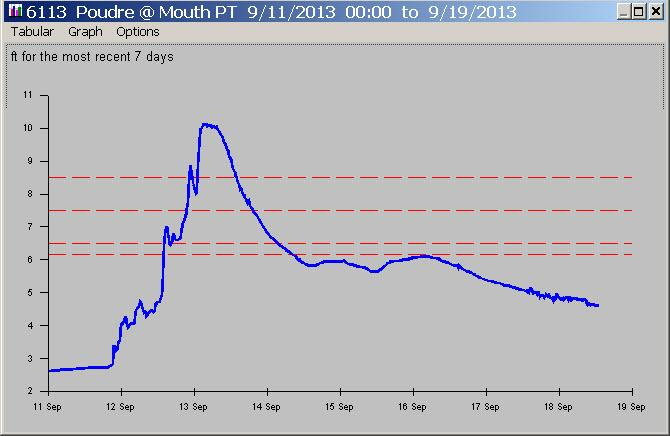
Sept. 11-19, 2013
Did You Know?
You can monitor your energy and water use with our online portals.
We continually work to improve our infrastructure and distribution systems. See what’s in the works.
Permanent "duct mastic" material – not duct tape – should be used for sealing attic ductwork and crawl spaces.